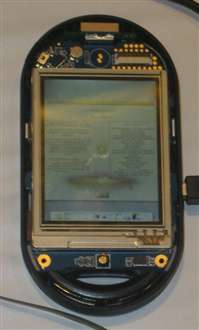I met lead Enlightenment developer Carsten Haitzler in the exhibition hall at the Southern California Linux Expo (SCALE) this past weekend. Carsten told me about prospects for the future of Enlightenment and shared with me some details about his work at OpenMoko, a division of FIC which is developing Linux-based open-source mobile phone handsets. He sees a big future for Linux in the mobile and embedded space and notes that Enlightenment, with its small memory footprint, is ideal for deployment on such devices.
Although Enlightenment—which is a lightweight alternative to KDE and GNOME—hasn't gained as much traction on the Linux desktop as its competitors, it has a loyal following of enthusiasts and is beginning to see commercial adoption in a variety of intriguing contexts. It is included as the default window manager in the Ubuntu-based gOS Linux distribution, which is deployed on budget computers from Everex like the upcoming Cloudbook.
My first interaction with Carsten was in 2006 when I interviewed him for an article about Terra Soft's Yellow Dog Linux distribution for the PlayStation 3, which used Enlightenment's pre-alpha E17 as a desktop environment. The software has evolved considerably since then and has become more robust.
The OpenMoko software platform makes extensive use of the GTK application development toolkit, which is also used on Maemo-based devices like the Nokia N810. GTK provides a solid framework for application development, but there are some notable downsides. As Carsten explained to me, using GTK pervasively throughout the user interface consumes memory that could be put to better use.
Replacing some of the core GTK-based interactive components with comparable software built using Enlightenment technologies, he says, provides a very significant reduction in memory overhead and increases the responsiveness of the device. He also tells me that using pieces of Enlightenment will bring more elaborate visual effects and a graphically richer user experience to the OpenMoko products.
He showed me an OpenMoko Neo1973 prototype on which he was running a desktop version of E17. The whole environment worked and was extremely responsive. Although he's running regular E17 on the device for testing purposes, the final version of the OpenMoko software platform will be a mix of custom-built Enlightenment-based components and GTK software—all designed specifically for touch-screen finger usability.
My conversation with Carsten left me with a very positive impression of the direction that OpenMoko is moving with its software platform. I think that we can expect to see some very exciting things emerge as development continues.

reader comments